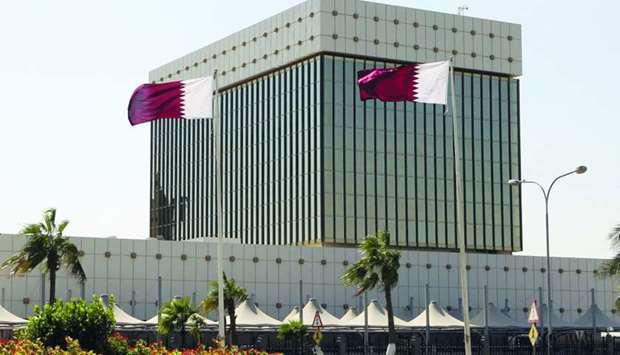*'Volatility risk' has reduced with almost all deposits from blockading countries going out of system: QCB
Qatar banking sector’s “volatility risk” has reduced with almost all the deposits from the blockading countries “going out of the system”, QCB said in its 10th Financial Stability Review (FSR).
The country’s banking sector “re-established the funding structure with healthier” maturity structure and from diversified source, it said.
Capitalisation levels of the local lenders “strengthened significantly”, while NPL ratios are quite low and are adequately provisioned.
Moreover, banking sector profitability indicators also remained stable. Stress tests conducted by the QCB also showed improved resiliency of the sector towards plausible vulnerabilities.
“Overall, banking sector remained sound and in good stead during 2018,” the central bank said.
The banking sector in Qatar showed a “resilient” performance in 2018, it said.
Though the sector assets grew lower than the previous year, 2018 witnessed a rebound of private sector credit demand.
Liquidity improved supported by benign fiscal position and current account balance. Improvements in stock market also boosted the operating environment of the banking sector.
With strengthened macroeconomic conditions, capital flows have normalised fast. Rebound in non-resident deposits as well as fund flow from foreign financial institutions indicated confidence of investors in the Qatari economy.
Improvements in domestic liquidity eased primary liquidity, which remained in surplus mode, with lower requirement of REPO by banks for short-term liquidity management.
During 2018, Qatar’s broader financial sector recorded significantly faster growth as compared to the commercial banking sector, QCB noted.
There were, however, variations across different segments. As in the previous year, the growth of non-banking sector was driven by insurance companies, exchange houses and Qatar Development Bank (QDB). Increasing business, lower losses and healthy rise in investment income of insurance companies contributed to rise in income and profits despite underwriting losses as the combined ratio remained above 100%, the review showed.
In keeping with the reinforced thrust on diversification, QDB continued to record healthy expansion in its credit facilities. Capitalisation of QDB remained strong in terms of adequacy and quality indicating substantial scope for stable expansion of its activities.
The level of capitalisation of finance companies has been high and improved further during the year.
Among the QFCRA-regulated institutions, corporate banks, despite the fall in their profits, enhanced their capital adequacy ratios and remained well above the regulatory requirements. Advisory firms more than doubled their profits through lower expenses.
Insurance companies generated profits contributed by investment income, the FSR showed.
According to the QCB, the Qatari economy “fully came out of the initial adverse impacts” from the economic blockade.
This, it said was “reflected in the normalisation” of capital flows, comfortable liquidity position of the banking system, official foreign exchange reserves returning close to the pre-blockade level, a healthy growth in bank credit to the private sector and a reasonable growth in the non-hydrocarbon sector.
Qatar continued to remain competitive in terms of global competitiveness index (GCI) of World Economic Forum. According to the revised GCI, Qatar ranked 30 out of 140 AEs and EMDEs in 2018, rising by two positions from 2017.
In the Arab region, it was the “second most competitive country”.
Its relative score and ranking was particularly high in the area of information and communication technology adoption, product market and infrastructure.
The elevated level in energy prices, combined with several reform measures, has led to a marked improvement in macroeconomic parameters of Qatar.
The trade and current account surplus, and fiscal balance improved continuously. Capital flows normalised despite the ongoing economic blockade, getting more diversified and from relatively stable sources.
There has been a significant rebuilding of foreign exchange reserves and improvement in liquidity positions in the banking system.
“These improvements, combined with economic diversification policies implemented in recent years, have reduced domestic vulnerabilities. Concomitantly, the ability to withstand any unforeseen disturbances and maintain financial stability in Qatar appears to have strengthened,” QCB said in its 10th Financial Stability Review.




